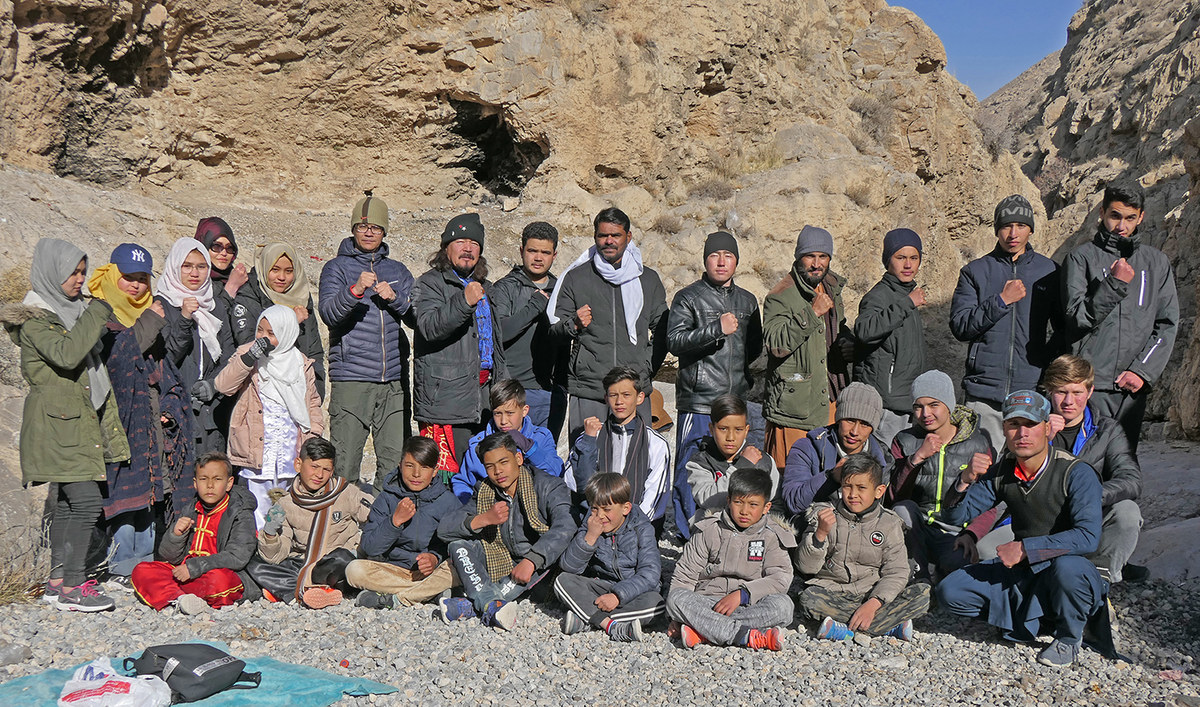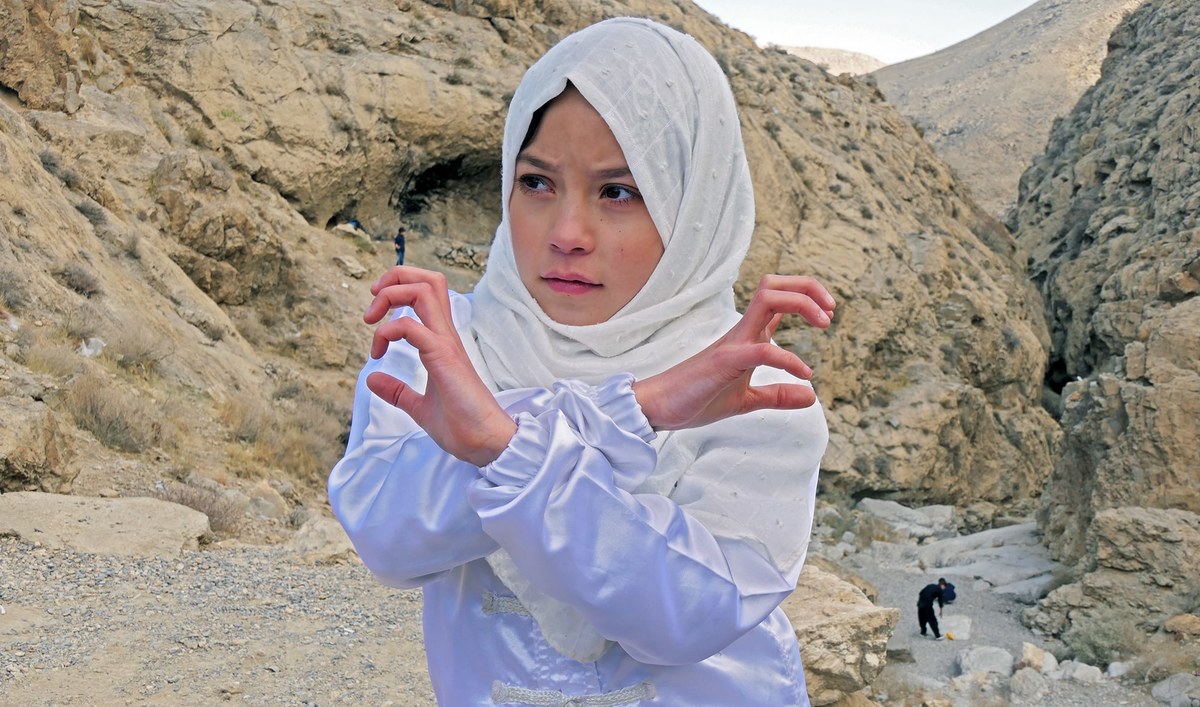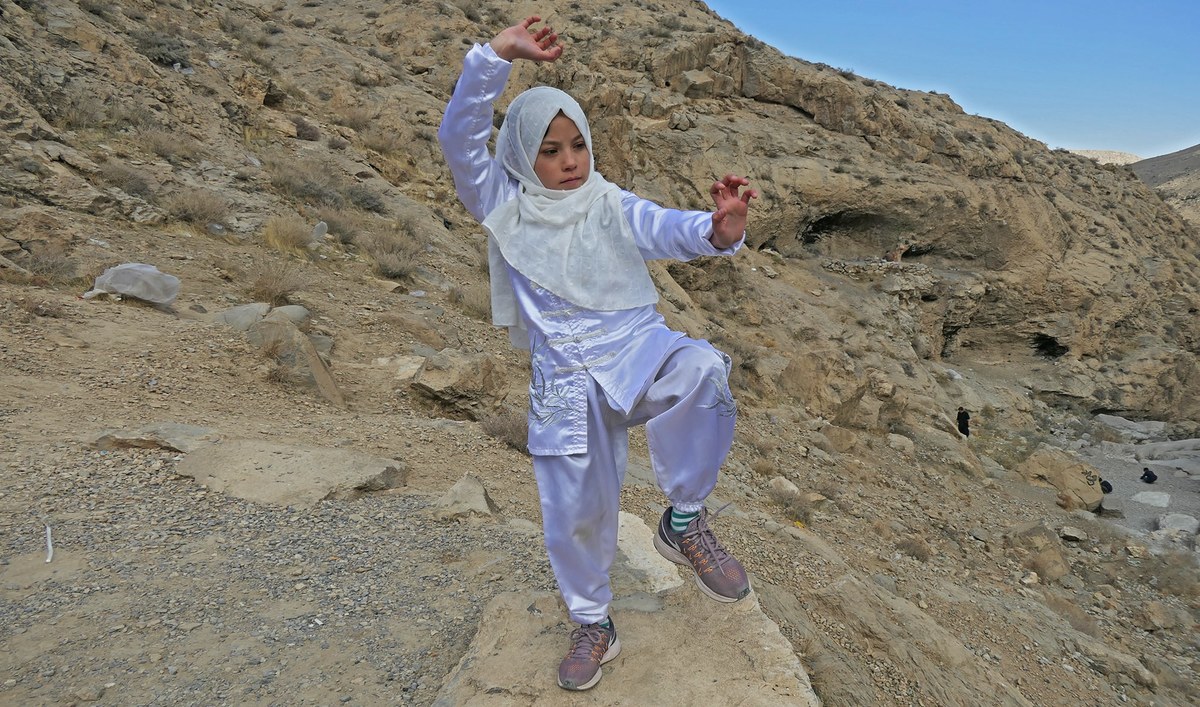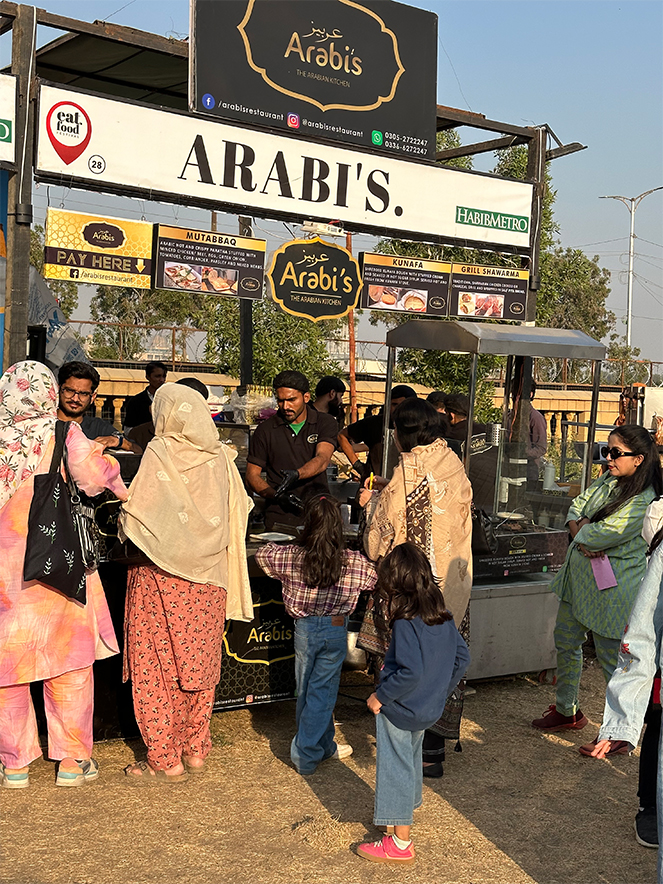QUETTA: Every Sunday, 11-year-old Nadia Zakir Hussain undertakes a two-hour-long climb of the steep Koh-e-Murdar mountain near her home in southwestern Pakistan, stopping to rest thrice before she reaches a spot where she and other students train in Shaolin Kung Fu.
The climb is not easy for Hussain, born with severe scoliosis, an excessive curvature of the spine, which at an early age left her struggling to keep balance while other children started walking.
But Hussain says Shaolin, one of the oldest and most famous styles of kung fu, has taught her how to better manage a life of chronic pain.
“The basics of Shaolin teach us how to tolerate pain, hence now I am able to fight against any physical pain,” she told Arab News during her training on Koh-e-Murdar in Balochistan province last week.
Hussain’s mother Fozia Abdul Wahid said she was diagnosed when she was one year old and the doctors warned her against exertion, especially through sports.
“But Nadia insisted that she wanted to learn Shaolin kung fu,” Wahid said, “and I couldn’t refuse because of her passion.”
While her mother fretted over Hussain’s condition, the girl dreamt of joining a famous Shaolin Kung Fu club on Quetta’s Alamdar Road, — home to many fighting clubs — where her elder sister was already training. At the age of nine, she started training with Mubarak Ali Shan, a 52-year-old martial artist from Quetta’s Shia Hazara community who has been training children at his Shan Wang Shaolin Kung Fu Academy since the mid 2000s.

Students of Shaolin kung fu grandmaster Mubarak Ali Shan pose for a photograph after training on a slope of Koh-e-Murdar, near Quetta, Balochistan, on Dec. 27, 2020. (AN photo by Saadullah Akhter)
“When Nadia came to my club for admission, she needed support to walk, and she urged me to teach her,” Shan told Arab News. “After seeing her courage and passion for Shaolin, I started giving all my attention to her.”
He said Hussain had almost mastered tai chi, a kung fu self-defense technique, and won a gold medal during an inter-provincial Shaolin tournament in Quetta in September.

Nadia Zakir Hussain poses for a photograph after Shaolin kung fu training on a slope of Koh-e-Murdar, near Quetta, Balochistan, on Dec. 27, 2020. (AN photo by Saadullah Akhter)
Although her mother still wants Hussain to quit fighting because of her condition, September’s win has motivated her to participate in international competitions.
“Several times I have urged Nadia to skip and rest, but she has a dream of winning gold for Pakistan,” Wahid said.

Nadia Zakir Hussain poses for a photograph after Shaolin kung fu training on a slope of Koh-e-Murdar, near Quetta, Balochistan, on Dec. 27, 2020. (AN photo by Saadullah Akhter)
For Hussain and many other children from Pakistan’s persecuted minority Hazara community, kung fu is not only about training and possible success in competitions; it is about learning to protect themselves in a province that has seen countless deadly attacks against the community.
Data from the Balochistan Shia Conference shows that at least 3,000 Hazaras have lost their lives in attacks and targeted killings in the past two decades.
Indeed, Hussain said many girls and boys from her neighborhood had taken up Shaolin to boost their mental and physical strength.
Her teacher agreed.
“Many Hazara youth and children have been taking admission in kung fu and karate clubs,” Shan said, “in order to get physical, mental and spiritual relief.”


















